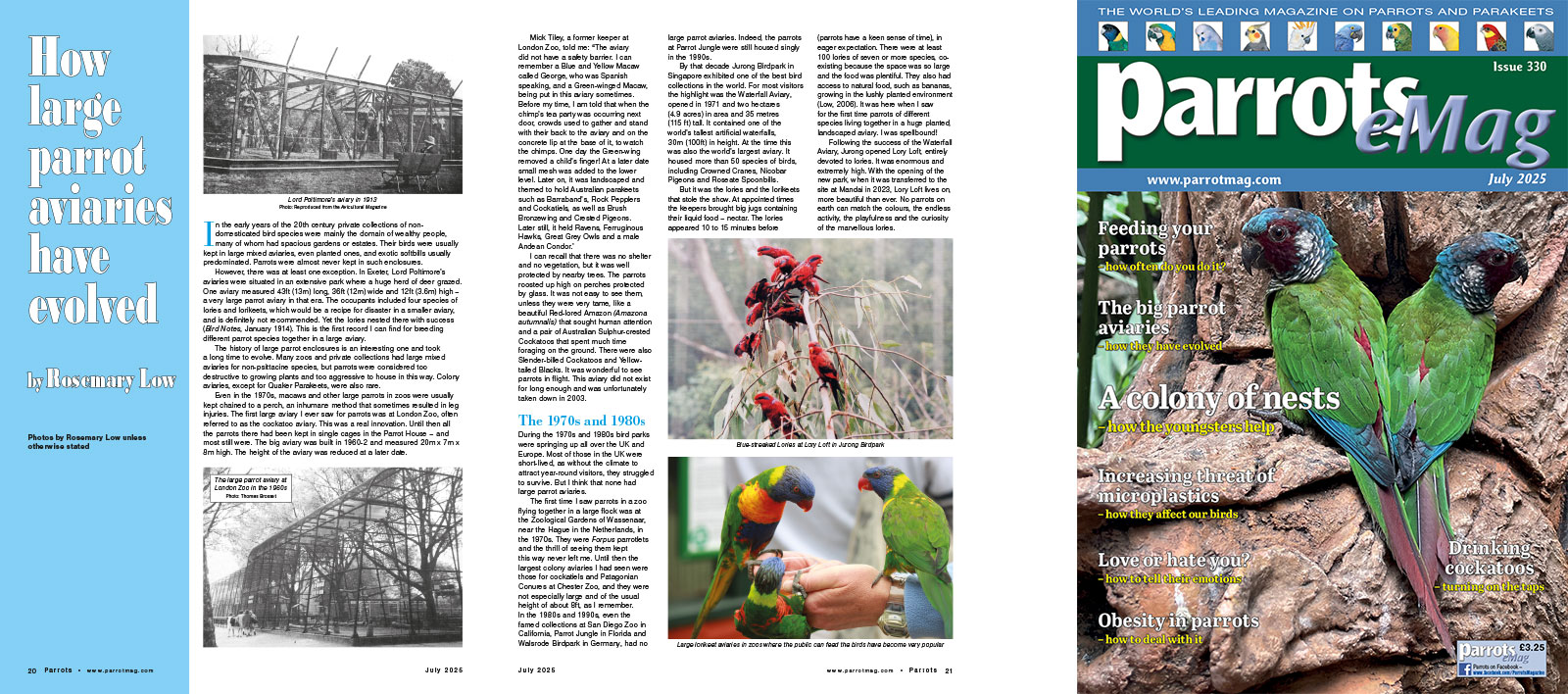
By Rosemary Low
In the early years of the 20th century private collections of non-domesticated bird species were mainly the domain of wealthy people, many of whom had spacious gardens or estates. Their birds were usually kept in large mixed aviaries, even planted ones, and exotic softbills usually predominated. Parrots were almost never kept in such enclosures.
However, there was at least one exception. In Exeter, Lord Poltimore’s aviaries were situated in an extensive park where a huge herd of deer grazed. One aviary measured 43ft (13m) long, 36ft (12m) wide and 12ft (3.6m) high – a very large parrot aviary in that era. The occupants included four species of lories and lorikeets, which would be a recipe for disaster in a smaller aviary, and is definitely not recommended. Yet the lories nested there with success (Bird Notes, January 1914). This is the first record I can find for breeding different parrot species together in a large aviary.
The history of large parrot enclosures is an interesting one and took a long time to evolve. Many zoos and private collections had large mixed aviaries for non-psittacine species, but parrots were considered too destructive to growing plants and too aggressive to house in this way. Colony aviaries, except for Quaker Parakeets, were also rare.
